
Welcome to the biweekly electronic newsletter from Stanford Bio-X for members of the Bio-X Corporate Forum. Please contact Dr. Hanwei Li, the Bio-X Corporate Forum Liaison if you would like to be added or removed from this distribution list, or if you have any questions about Stanford Bio-X or Stanford University.
Highlights
** On October 9, 2013, Bio-X celebrated the 10th Anniversary of the James H. Clark Center, the hub of Bio-X. Check out CLARK CENTER @ 10X as well as the Bio-X Timeline over the last 15 years!!
** Check out the article by Stanford President John Hennessy in the Nov/Dec 2013 issue of the Stanford Magazine on Bio-X and the Clark Center, "A Cauldron of Innovation".
Bio-X Core Programs
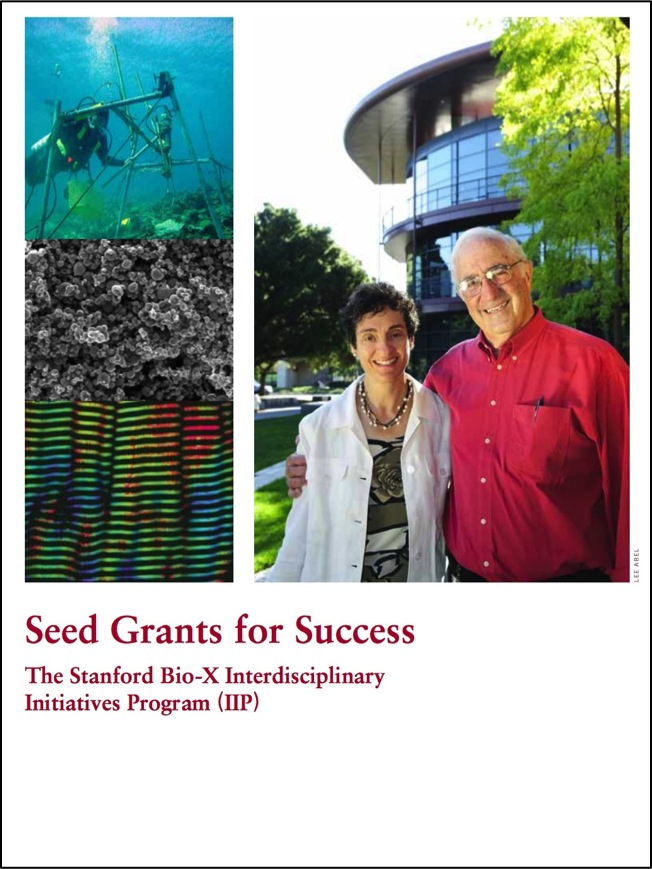 SEED GRANTS FOR SUCCESS - Stanford Bio-X Interdisciplinary Initiatives Program (IIP) SEED GRANTS FOR SUCCESS - Stanford Bio-X Interdisciplinary Initiatives Program (IIP)The Bio-X Interdisciplinary Initiatives Program represents a key Stanford Initiative to address challenges in human health. Currently, the IIP awards approximately $4 million every other year in the form of two-year grants averaging about $200,000 each. From its inception in 2000 through the beginning of the seventh round in 2014, the program has provided critical early-stage funding to 164 different interdisciplinary projects, involving collaborations from over 750 faculty members, and creating over 700 teams from six different Stanford schools. From just the first 6 rounds, the IIP awards have resulted in a 10-fold-plus return on investment, as well as hundreds of publications, dozens of patents filed, and most importantly, the acceleration of scientific discovery and innovation. In 2014, Bio-X started it's 7th round of the Bio-X IIP Seed Grants Program, and 22 newly awarded projects were selected from 142 Letters of Intent (LOIs)! This has been the largest number of LOIs that Bio-X has received. Please go here to check out the newly awarded projects. Competition was intense, and the selection criteria included innovation, high-reward, and new interdisciplinary collaborations. (To view the 142 other IIP projects that have been funded from the previous 6 rounds, please click here.) |
 Bio-X FELLOWSHIPS Bio-X FELLOWSHIPSEvery year, graduate students and postdoctoral scholars of Bio-X affiliated faculty are highly encouraged to apply for the Bio-X Fellowships, which are awarded to research projects that are interdisciplinary and utilize the technologies of different fields to solve different biological questions. Students are encouraged to work collaboratively with professors of different departments, thus creating cross-disciplinary relationships among the different Stanford schools. Our fellows have conducted exciting research, resulting in publications in high-impact journals and have been offered excellent positions in industry and academia. To date, Stanford Bio-X has a total of 198 Fellows. On Oct 6, 2015, we announced the 25 new winners of the 2015 PhD Fellowship program during the Fellows Symposium. You can view the numerous Fellowship projects that have been awarded over the years as well as oral presentations from previous symposiums here. |
 Bio-X UNDERGRADUATE SUMMER RESEARCH PROGRAM Bio-X UNDERGRADUATE SUMMER RESEARCH PROGRAMThe Bio-X Undergraduate Summer Research Program (USRP) supports undergraduate research training through an award designed to support interdisciplinary undergraduate summer research projects. The program is an invaluable opportunity for students to conduct hands-on research, learn how to carry out experiments in the laboratory, and develop the skills to read and analyze scientific literature. This program is eligible to Stanford students who want to work in the labs of Bio-X affiliated faculty. This year, nearly 170 students applied to the program, and 65 students were selected. Therefore, to date, 371 awards have been given to the Stanford undergraduate community to participate in the Bio-X Summer Research Program. The 2015 USRP officially ended during the last week of August, culminating in the USRP participants presenting their summer's research work during the poster session of last week's Bio-X IIP Seed Grant Symposium. In addition, during the 10 weeks of USRP, a total 30 different Faculty Talks took place on the 10 Wednesdays in Clark Center's S360 where the USRP students had the opportunity to learn about other faculty's research. To learn more about USRP and the Faculty Talks, please email Dr. Hanwei Li. |
COLLABORATIONS: We are cultivating and are highly successful in building meaningful collaborations with numerous corporate colleagues. New collaborations through our core programs are highly encouraged. To learn about how to get involved, please contact Dr. Hanwei Li, or Dr. Heideh Fattaey.
SYMPOSIUMS: Bio-X also holds symposiums every year that highlight our core programs. Thanks to all who came and attended the latest Bio-X IIP Seed Grants Program Symposium on August 26, 2015! It was extremely successful with 8 fantastic talks, and 170 posters presented during the reception (the largest poster session yet!). Nearly 400 people were in attendance of the event, with numerous discussions taking place throughout the event. Please go here to view the agenda and poster title list. Talks that were allowed to be videotaped will be uploaded as soon as possible.
All symposiums are listed on our website, including past IIP Seed Grants Program Symposiums, past Fellows Symposiums, and past Annual Symposiums.
If you'd like to learn more about the symposiums or any of the projects that were presented during the symposiums, please contact Dr. Hanwei Li with your questions.
News
 Dean Lloyd Minor on his vision for Stanford Medicine
Dean Lloyd Minor on his vision for Stanford Medicine
School of Medicine Dean Lloyd Minor
It’s been nearly three years since Lloyd Minor, MD, took the helm as dean of the Stanford University School of Medicine. In that time some exciting and significant changes have taken place at Stanford Medicine and beyond. In this podcast, Dean Minor will discuss some of the highlights of his tenure to date, the collaborative culture that is so unique here, his commitment to diversity and his vision for the future of Stanford Medicine.
 Researchers suss out brain tumors, and therapy response, with new metabolic PET tracer
Researchers suss out brain tumors, and therapy response, with new metabolic PET tracer
Bio-X Affiliated Faculty Sam Gambhir
Locating a tumor hiding in a thicket of brain cells can be a tricky proposition. But doing so accurately is critical to removing the cancer via surgery, or for monitoring its response to therapy. Now researchers at the School of Medicine have devised a new way to cause brain tumor tissue to stand out clearly during a type of imaging scan called positron emission tomography. They capitalized on the fact that rapidly dividing cancer cells require vast molecular stockpiles to create new cells. To meet this need, cancer cells express higher-than-normal levels of a protein called pyruvate kinase M2, or PKM2. “Tumor cells do all kinds of things to survive and prosper in the body,” said Sanjiv Sam Gambhir, MD, PhD, professor of radiology and director of the Molecular Imaging Program at Stanford. “One of the key things they modify is a master switch that controls cell metabolism and allows the cell to make more of the building blocks necessary for cell division. But until now we’ve had no way to assess the presence or activity levels of the PKM2 protein involved in that switch.” Gambhir, who holds the Virginia and D.K. Ludwig Professorship for Clinical Investigation in Cancer Research, is the senior author of a paper describing the research. Former postdoctoral scholar Timothy Witney, PhD, and instructor of radiology Michelle James, PhD, share lead authorship of the paper, which was published Oct. 21 in Science Translational Medicine.
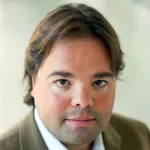 Stanford researchers identify potential security hole in genomic data-sharing network
Stanford researchers identify potential security hole in genomic data-sharing network
Bio-X Affiliated Faculty Carlos Bustamante
Sharing genomic information among researchers is critical to the advance of biomedical research. Yet genomic data contains identifiable information and, in the wrong hands, poses a risk to individual privacy. If someone had access to your genome sequence — either directly from your saliva or other tissues, or from a popular genomic information service — they could check to see if you appear in a database of people with certain medical conditions, such as heart disease, lung cancer or autism. Work by a pair of researchers at the Stanford University School of Medicine makes that genomic data more secure. Suyash Shringarpure, PhD, a postdoctoral scholar in genetics, and Carlos Bustamante, PhD, a professor of genetics, have demonstrated a technique for hacking a network of global genomic databases and how to prevent it. They are working with investigators from the Global Alliance for Genomics and Health on implementing preventive measures. The work, published Oct. 29 in The American Journal of Human Genetics, also bears importantly on the larger question of how to analyze mixtures of genomes, such as those from different people at a crime scene.
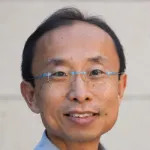
Graphene key to high-density, energy-efficient memory chips, Stanford engineers say
Bio-X Affiliated Faculty H.-S. Philip Wong and Electrical Engineering Faculty Eric Pop
The memory chips in phones, laptops and other electronic devices need to be small, fast and draw as little power as possible. For years, silicon chips have delivered on that promise. But to dramatically extend the battery life of mobile gadgets, and to create data centers that use far less energy, engineers are developing memory chips based on new nanomaterials with capabilities that silicon can't match. In three recent experiments, Stanford engineers demonstrate post-silicon materials and technologies that store more data per square inch and use a fraction of the energy of today's memory chips. The unifying thread in all three experiments is graphene, an extraordinary material isolated a decade ago but which had, until now, relatively few practical applications in electronics. A purified relative of pencil lead, graphene is formed when carbon atoms link together into sheets just one atom thick. Atom-thin graphene is stronger than steel, as conductive as copper and has thermal properties useful in nanoscale electronics. "Graphene is the star of this research," said Eric Pop, associate professor of electrical engineering and a contributor to two of the three memory projects. "With these new storage technologies, it would be conceivable to design a smartphone that could store 10 times as much data, using less battery power, than the memory we use today." Professor H.-S. Philip Wong and Pop led an international group of collaborators who describe three graphene-centric memory technologies in separate articles in Nature Communications, Nano Letters and Applied Physics Letters.
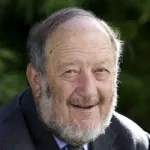
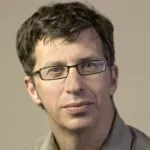 Sleep deprivation affects stem cells, reducing transplant efficiency
Sleep deprivation affects stem cells, reducing transplant efficiency
Bio-X Affiliated Faculty Luis de Lecea, Irv Weissman
Drowsy mice make poor stem cell donors, according to a new study by researchers at the Stanford University School of Medicine. A sleep deficit of just four hours affects by as much as 50 percent the ability of stem cells of the blood and immune system to migrate to the proper spots in the bone marrow of recipient mice and churn out the cell types necessary to reconstitute a damaged immune system, the researchers found. Although the research was done in laboratory mice, the findings have possible implications for human stem cell transplants. Tens of thousands of these procedures, often referred to as bone marrow transplants but more properly called hematopoietic stem cell transplants, are performed each year to rescue patients with immune system disorders or cancers. “Considering how little attention we typically pay to sleep in the hospital setting, this finding is troubling,” said Asya Rolls, PhD, a former postdoctoral scholar at Stanford. “We go to all this trouble to find a matching donor, but this research suggests that if the donor is not well-rested it can impact the outcome of the transplantation. However, it’s heartening to think that this is not an insurmountable obstacle; a short period of recovery sleep before transplant can restore the donor’s cells’ ability to function normally.” Rolls, who is now an assistant professor at the Israel Institute of Technology, shares lead authorship of the study, which was published Oct. 14 in Nature Communications, with Stanford postdoctoral scholar Wendy Pang, PhD, and Ingrid Ibarra, PhD, the assistant director of the Stanford Cardiovascular Institute. Luis de Lecea, PhD, a professor of psychiatry and behavioral sciences, and Irving Weissman, MD, director of the Stanford Institute of Stem Cell Biology and Regenerative Medicine, share senior authorship.

 Precursor cells discovered that could help regrow heart arteries
Precursor cells discovered that could help regrow heart arteries
Bio-X Affiliated Faculty Kristy Red-Horse and Irv Weissman
Researchers at Stanford have discovered which type of cell develops into the muscular lining of arteries that feed the heart. The finding, in mice, as well as the discovery of the molecular signals that govern this transformation, may ultimately lead to human therapies to regrow healthy coronary arteries, the researchers said. Scientists previously showed that portions of the coronary artery develop from cells on the surface of the heart called epicardial cells. However, the direct progenitors to coronary artery smooth muscle cells, the important component that encases the artery and gives it strength, were not identified. Through a series of sophisticated techniques, the researchers solved the mystery: They determined that smooth muscle cells in cardiac arteries grew out of a kind of cell called a cardiac pericyte. Perhaps more important, scientists also identified a molecule called notch3 as the signal that governs the conversion of pericytes to cardiovascular smooth muscle cells. A paper describing the work was published Oct. 19 in eLife.
Events
| Spectrum November 9, 2015, 6 pm - 7:30 pm Li Ka Shing Center, Rm 130, Stanford, CA SPADA: Enabling Precision Medicine through Genomic Interpretation Speaker: Martin Resse, PhD, Omicia |
Chemical & Systems Biology November 13, 2015, 12 pm - 1 pm Beckman/Munzer Auditorium, Stanford, CA Cutting Lecture Series: "Targeting DNA Repair in Cancer Therapy" Speaker: Alan D'Andrea, MD, Harvard University |
Resources
| Stanford University |
| Stanford Bio-X |
| Bio-X Seed Grants The Stanford Bio-X Interdisciplinary Initiatives Program (IIP) provides seed funding for high-risk, high-reward, collaborative projects across the university, and have been highly successful in fostering transformative research. |
| Office of Technology and Licensing "Techfinder" Search the OTL Technology Portal to find technologies available for licensing from Stanford. |
| Stanford Center for Professional Development - Take advantage of your FREE membership! - Take online graduate courses in engineering, leadership and management, bioscience, and more. - Register for free webinars and seminars, and gets discounts on courses. |
| Stanford Biodesign Video Tutorials on how FDA approves medical devices A series of video briefs recently produced by the Stanford Biodesign Program teaches innovators how to get a medical device approved for use in the United States. This free, online library of 60 videos provides detailed information on the Food and Drug Administration regulatory process, short case studies and advice on interacting with the FDA. |
To learn more about Stanford Bio-X or Stanford University, please contact Dr. Hanwei Li, the Bio-X Corporate Forum Liaison, at 650-725-1523 or lhanwei1@stanford.edu, or Dr. Heideh Fattaey, the Executive Director of Bio-X Operations and Programs, at 650-799-1608 or hfattaey@stanford.edu.

